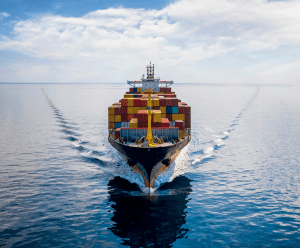
The coast is clear for nearshoring in Southeast Asia

Businesses that focus on producing and handling physical goods, such as manufacturers, retailers, and distributors, typically face challenges with complex supply chains, high shipping costs, or needing to respond quickly to customer demands.
In Southeast Asia, nearshoring strategies have taken root over the past few years to address these challenges. Various reasons such as lower production costs, relative political stability, and strategic location have made countries such as Malaysia, Vietnam, Thailand, and Indonesia attractive for businesses. In 2022, the net Foreign Direct Investment (FDI) for Southeast Asia was at a record high of US$224 billion (€200.4 billion), led by a strong rebound in manufacturing, digital economies, and strategic supply chain enhancements.
The region's proximity to key Asian markets has made it increasingly more popular as a prime location for nearshoring. For example, Thailand is a production hub for electronics produced by multinational companies such as Sony and Sharp. Chinese companies such as Shanghai’s JinkoSolar are shifting their production to the island nation to take advantage of lower costs and avoid geopolitical tensions.
Similarly, Vietnam is establishing itself as an ideal nearshoring site in Southeast Asia. Its solar panel industry attracts ancillary support providers, including plastic molding manufacturers and energy storage providers. Chinese companies that have moved to Vietnam include Growatt, a Shenzhen-based power storage firm, and Hangzhou First Applied Material, a solar panel component maker.
Why is Southeast Asia on the fast track for businesses on the nearshoring route?
1. A growing skilled workforce with affordable labor costs
Southeast Asian countries boast a workforce capable of handling complex tasks at a fraction of the cost. According to a report by the Reshoring Institute in 2022, a Malaysian production worker earns approximately US$8,000 (€7,280) annually.
Leveraging its young and growing population, many Southeast Asian countries are investing heavily in education and workforce development. For example, the Malaysian government has expanded its Technical and Vocational Education and Training (TVET) program centers into teaching factories, allowing students direct access to real industry training. This provides a readily available pool of skilled and cost-effective labor for various industries.
Furthermore, Southeast Asia's expanding middle class has created a strong domestic market for goods and services, making it an attractive destination for companies seeking to tap into this potential.
2. Favorable business environment
Geopolitical uncertainties and trade wars in China and the United States have pushed businesses to seek alternatives in Southeast Asia. Diversifying production across different locations in the region helped to reduce reliance on a single country.
Southeast Asian governments have also leveraged this popularity, actively promoting foreign investment and creating business-friendly environments.
Singapore has signed many free trade agreements like the Regional Comprehensive Economic Partnership (RCEP), which facilitates trade among 15 Asia Pacific countries, reducing tariffs and simplifying import and export processes. The city-state also offers tax breaks such as the Pioneer Certificate Incentive, which exempts businesses that add high value to the country, from tax for five years and can even be extended depending on the company’s commitment to further expansion.
Many countries in the Southeast Asian region are investing heavily in technology for ports, airports, and road networks as well. This can help boost connectivity and supply chain efficiency.
Singapore, already the busiest port in the world, is spending S$14 billion (€9.65 billion) to build an even bigger, smarter port by 2040. It aims to double its current capacity with new technologies, such as driverless vehicles and improved information systems that use electronic bills of lading.
3. Strategic geographical advantages
Located in a prime spot along important sea lanes, including the South China Sea and the Strait of Malacca, Southeast Asia’s key position facilitates efficient transportation of goods to and from major markets like China, India, and Australia. This geographical advantage allows companies to carry lower inventory levels, thereby reducing holding costs and improving cash flow.
Southeast Asia also has a wealth of natural resources, contributing to its economic attractiveness for nearshoring. The region is rich in various minerals, including tin, copper, nickel, and bauxite, which can be used in domestic industries.
For example, Indonesia’s nickel reserves make the country indispensable to the global electric vehicle (EV) industry. As this Southeast Asian country strives to become a global EV hub, companies like Tesla and BYD are reportedly finalizing deals to invest here, according to the country’s Coordinating Minister for Maritime Affairs and Investment, Luhut Binsar Pandjaitan.
Shore thing or risky business?
Despite Southeast Asia's numerous nearshoring advantages, the region also presents unique challenges that businesses must carefully consider.
Infrastructural challenges persist in Southeast Asia. Inadequate roads, congested ports, and limited inland transportation networks can lead to delayed deliveries, damaged goods, and increased transportation costs. While the region has been politically stable overall, certain countries have a history of political instability. For instance, Thailand has experienced several political coups in recent decades, leading to periods of economic volatility.
These risks can disrupt business operations, create supply chain disruptions, and increase operational costs. Companies must carefully assess each country's political climate and regulations before making nearshoring decisions.
As long as businesses build contingency plans to mitigate potential risks, they can easily capitalize on Southeast Asia’s geographical advantages, skilled workforce, and favorable business environment, all of which establish the region as the next wave of nearshoring destinations for businesses.
ALSO WORTH READING













 English
English